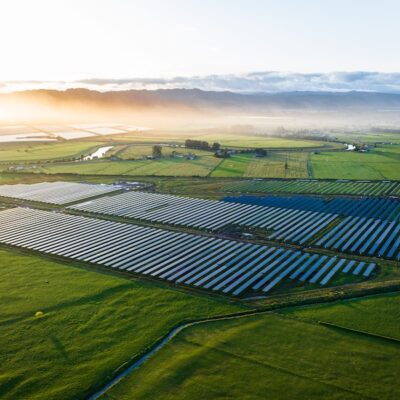Building resilient food chains for a sustainable future
Alan Adams explores how supply chains and food packaging solutions can be optimized to dramatically reduce food wastage to the benefit of the New Zealand economy and the global climate. […]
Alan Adams explores how supply chains and food packaging solutions can be optimized to dramatically reduce food wastage to the benefit of the New Zealand economy and the global climate.
Climate change action was at the top of the COP26 summit in Glasgow as leaders from some of the world’s biggest economies met to accelerate action towards the goals of the Paris Agreement. On home soil, New Zealand has pledged to halve its net greenhouse gas emissions by 2030.
Reducing food waste can play a key role in helping the country to meet its pledge as about 9% of New Zealand’s biogenic methane emissions and 4% of total greenhouse gas emissions are from food and organic waste(link is external).
Currently, the food supply chain is facing unprecedented stress from the increased demand for online shopping of food and beverages during the COVID-19 pandemic. The sector is at pains to keep up with increasing consumer expectation for fresh food delivered to their doorstep. Food consumed by New Zealanders today is not only crossing geographic boundaries from farm to store, but also e-commerce channels from store to doorstep.
Trips to the supermarket and online orders for a grocery basket have now become a more calculated and thoughtful process. There is greater scrutiny of where our food is produced when choosing healthier options and mounting questions of how sustainable the packaging is with the increasing deliveries.
The food supply chain is already complex and the pandemic has made it even more so for food exporting and importing countries alike. Border closures, delays in port clearances and higher freight costs are all adding layers of challenges to the supply chain. Food safety becomes an issue when perishable foods are sitting in a container or a truck or are subjected to increasingly frequent weather variances.
With all this in mind, it begs the question: how can we collectively as individuals, businesses and governments help to reduce food waste and ensure food safety and security before it’s too late? Let’s unpack this further.
Reducing waste at every stage of the supply chain
According to the United Nations, about 14 percent of food produced is lost between harvest and retail, with significant quantities also wasted in retail and at the consumption level. More than 20% is lost in the case of fruits and vegetables. In New Zealand, households throw away roughly 157,000 tonnes of food a year. This is equivalent to 271 jumbo jets of food and costs the country about $1.17 billion per year.
But food waste is more than the economic value of the food produced. It also comprises a waste of resources used to produce and distribute the food, from growing, farming and processing to transporting and cooking. When food is disposed of in landfills, it can produce huge amounts of methane – a greenhouse gas at least 28 times as potent as carbon dioxide.
A 2021 survey by Rabobank found that New Zealand residents estimate they are binning around 8.6 percent of their weekly food spend, however, this statistic is down from 10.2 percent in 2019. While it may be hard to determine the exact reasons for this decline, it is likely that greater education on practices like meal planning, food portioning, and preservation and preparation of leftovers may be supporting the gradual shift. This positive trajectory brings with it hope for the future; nevertheless, the responsibility to reduce waste cannot rely entirely on households. Collective action must be taken along all stages of the supply chain to ensure progress towards responsible production and consumption.
Innovation and collaboration for a sustainable food chain
Businesses have an important role to play in maximising the use of the food we produce. At Sealed Air, our efforts are centered on what we do best – supporting customers and the industry with innovative and essential packaging solutions that manage food quality and safety.
Proper packaging is essential to protecting food from spoilage and contamination and extending shelf life. Given the large amount of resources that go into food production, packaging can reduce the overall environmental impact even when its own environmental footprint is taken into consideration.
Achieving a low-carbon circular economy requires us to look at all aspects of the food supply chain. The carbon footprint produced during food production can be many times larger than the packaging it comes in; this is especially true for animal-based foods that tend to have a higher carbon footprint. It is for this reason that choosing a sustainable packaging solution that does not compromise on performance, protection and shelf-life extension is so important. This will ensure that all the precious resources that went into food production are not wasted.
One New Zealand-based agribusiness provider offers a good example of how this can be achieved. Talley’s(link is external) has risen to the challenge by implementing more sustainable packaging into their business model. Replacing polystyrene bins with a kerbside recyclable fibre-based solution, the new packaging takes up minimal storage space by packing flat until needed thus reducing storage and shipping costs, but ultimately keeps Talley’s produce to the same standard of freshness as non-recyclable alternatives. With creativity, innovation, and collaboration, we can all replicate this type of success.
Working toward a more resilient future
There is no doubt that food waste has significant implications on food security and the sustainability of our environment. The pandemic has exposed vulnerabilities in our supply chains that cannot be ignored. To ensure longevity of our resources, we must find ways to pre-empt shocks to our food production system and strengthen supply chain resilience from farm to table.
This is where governments, in addition to businesses, can play a critical key role in assessing impacts, setting targets, mobilizing financing and developing the policies and infrastructure for all parties to jointly work towards set goals. There is however an important ingredient to success. There needs to be continuous efforts by governments and businesses to clarify and communicate the rationale and impact of what they do, so consumers too can play their part to support and contribute to a low-carbon circular economy.
Alan Adams is Sustainability Director, APAC, at Sealed Air.






